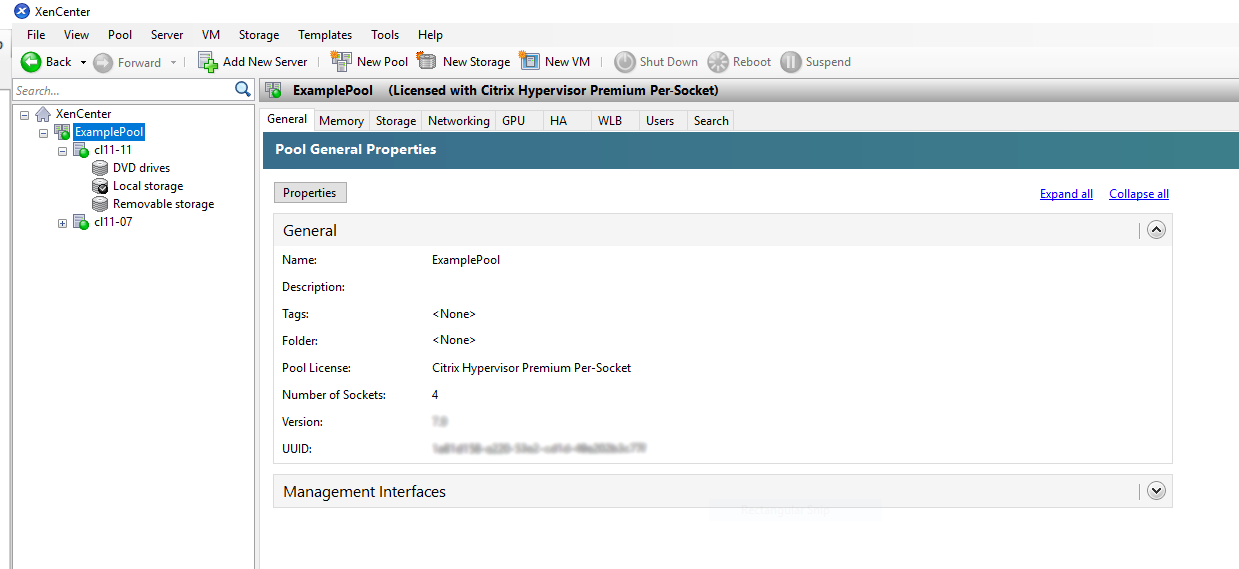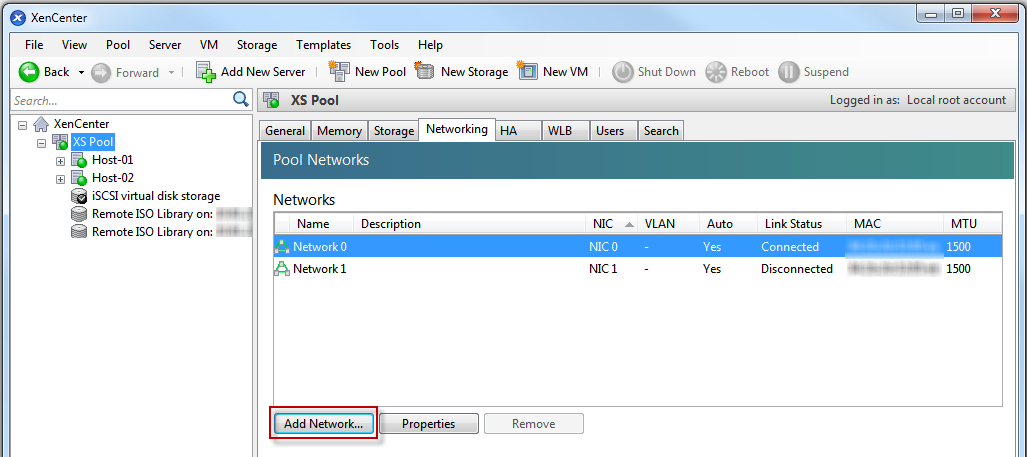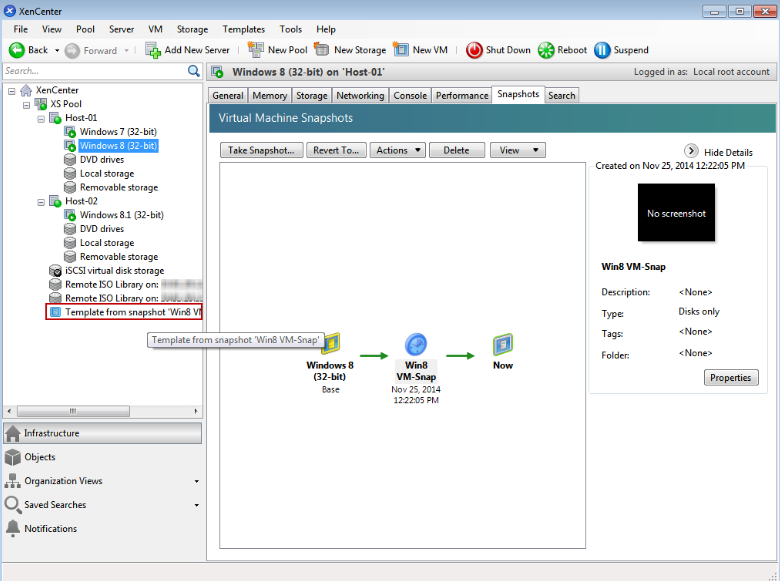Citrix Hypervisor
Citrix is a well-known American cloud software company. It was founded over three decades ago by the late Ed Iacobucci, a virtualization pioneer who began his career at IBM. The company, based in California, has over 400,000 enterprise clients worldwide, including most of the Fortune 100 and Fortune 500.
Citrix Hypervisor traces its roots to Xen, a virtualization software released in 2003 as a research project at the University of Cambridge. Citrix acquired XenSource, the company behind the Xen, in 2007 and, in 2018, renamed the enterprise version of Xen to Citrix Hypervisor.
The company currently employs nearly 10,000 people worldwide and has over $3 billion in annual sales.
Citrix Hypervisor: Plans and pricing
Citrix Hypervisor is a free add-on for all customers that pay for Citrix desktop-as-a-service (DaaS). There's no standard pricing for Citrix DaaS-- you'll have to contact the company directly for a quote.
Yet, sample price estimates on Microsoft Azure's cloud platform show $20 per user per month for a 500-person contact center team and $18 per user per month for 1,000 office employees. It seems the unit price drops the more the number of users and rises the fewer the number.

Citrix Hypervisor: Features
A hypervisor is a software that creates and runs virtual machines. It enables one host computer to support multiple guest virtual machines by sharing its hardware resources.
A virtual machine (VM) is a software that emulates the functionality of a separate physical computer. For instance, you can run the Windows operating system on a MacBook laptop. Here, the Windows VM acts like its separate computer, and you can switch between it and your macOS operating system anytime.
There are many use cases for virtual machines. For example, you can use it to try a new operating system you’re considering adopting. Also, let’s say you’re a developer using a MacBook Pro powered by macOS but want to build an app for the Windows OS. You can run a Windows virtual machine and program your application instead of buying a new Windows-powered computer.
Citrix Hypervisor lets you run multiple independent virtual machines on a single physical computer. Any software program executed on these virtual machines is separated from the underlying host hardware resources. It works for personal computers and servers.
Citrix Hypervisor is based on the Xen Project hypervisor, with extra features and technical support provided by Citrix. The Xen hypervisor is a type-1 or bare-metal hypervisor, meaning it runs directly on the host machine’s physical hardware. The other type is the type-2 hypervisor, which runs on top of an existing operating system.
Citrix Hypervisor delivers fast and efficient performance as a type-1 hypervisor with direct access to the host hardware. It's also very secure owing to the absence of flaws and vulnerabilities that accompany operating systems. With this software, every virtual machine is isolated from the other, and the isolation helps protect them from cyber threats.

Key features of the Citrix Hypervisor include;
Resource pools enable Citrix users to manage multiple servers/virtual machines and their connected storage as a single entity. Thanks to this feature, you can move and run virtual machines on different Citrix Hypervisor hosts-- create on one server and move to another without interference.
A single pool can contain up to 64 servers running the same version of Citrix Hypervisor software but with different hardware.
If one server suffers a hardware failure, you can restart the failed virtual machines on another server within the same resource pool and have it running exactly as before. You can also configure virtual machines to migrate to another host automatically when their host fails.
Citrix Hypervisor lets users create disk images of virtual machines. A disk image is a file containing all the contents of a specific virtual machine– you can upload that image to another host system to give you an exact replica of that virtual machine.
Think of a disk image as a backup system for your virtual machine. Thanks to the Open Virtualization Format (OVF), an open-source standard, you can easily import or export virtual machines from one host machine to another– it doesn’t matter what virtualization software you created the VMs on.
This software supports two disk image formats; Virtual Hard Disk (VHD) and Virtual Machine Disk (VMDK).
Citrix Hypervisor lets you recover virtual machines from a hardware failure. It stores your virtual machine’s metadata (structural information about files and folders) in a backup environment. In case of failure, you can restore the metadata to recreate your virtual machine.

Citrix Hypervisor: Interface and use
By default, Citrix Hypervisor uses a command line interface, meaning you must know specific codes to input to get the software to perform its functions. Using a command line interface is pretty challenging for the average computer user due to the requirement to memorize commands. Fortunately, you can install a Graphical User Interface (GUI) console to operate Citrix Hypervisor with less difficulty.
Citrix Hypervisor: Support
You can contact Citrix through email, live chat, or telephone to resolve issues. There’s also extensive documentation about Citrix Hypervisor on the official website.
Citrix Hypervisor: The competition
The best alternative to Citrix Hypervisor that we’d recommend is VMware Workstation Pro. It offers similar features to Citrix Hypervisor for a more affordable price. It’s also easier to use, but the drawback is that it isn’t compatible with the macOS operating system.
Citrix Hypervisor: Final verdict
Citrix Hypervisor is a tool we’d gladly recommend for enterprises that want to create and manage a cluster of virtual machines. The main drawback is its high price which makes it unsuitable for small businesses with few employees.
0 comments:
Post a Comment